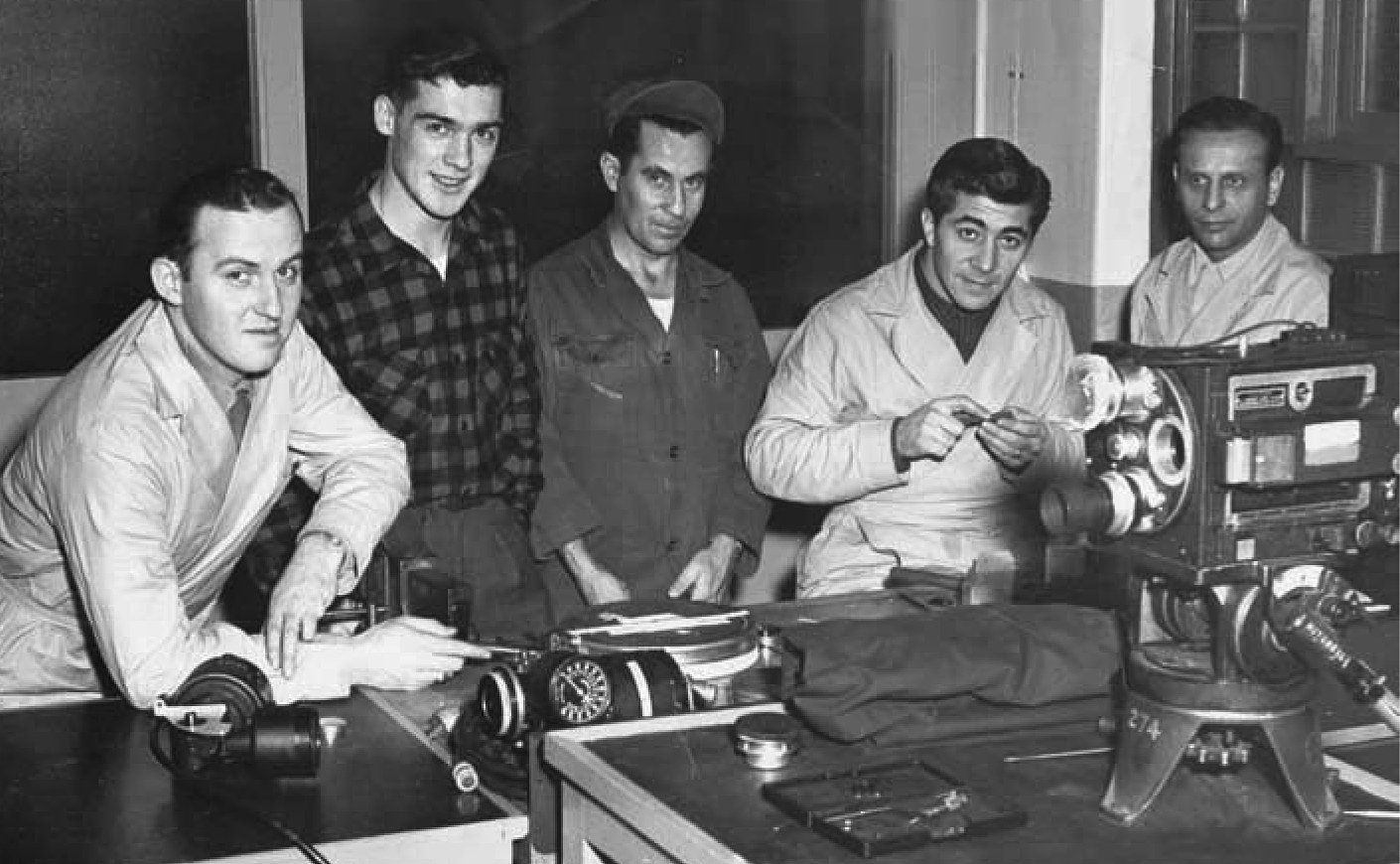
In Memoriam: ASC Associate Richard DiBona
The co-founder of General Camera and leading supplier of motion-picture equipment died in 2020 at the age of 97.

“Cameras are my love,” ASC associate member Richard DiBona told American Cinematographer in 2011. “I was a filmmaker, a camera designer. I was born with movies inside me.”
Born in Brooklyn in 1922, DiBona had a career spanning more than three decades as a leading supplier of motion-picture equipment. He co-founded General Camera Corp. with ASC associate Milton Keslow, and from 1962 to 1992, General Camera supplied equipment to nearly 90 percent of projects produced on the East Coast.
DiBona enlisted in the US Army in 1941, shortly after the United States joined World War II, and entered the Signal Corps as a non-commissioned officer at its Photographic Center in Queens. He staffed the machine shop, spending four years converting 35mm wind-up Eyemos and 16mm Filmos and Auricons for hand-held use on the battlefield.

There, DiBona worked with Stanley Cortez, ASC, who, DiBona recalled, “prided himself on teaching those soldiers the craft.” He also met fellow soldier and future ASC member Gerald Hirschfeld. After the war, while still at the Signal Corps, DiBona was one of the men selected to photograph the first atomic-bomb program tests in Nevada. “I went out there twice,” he shared. “We didn’t get too close, although we were close enough to get knocked off our feet.”
Following his position at the Signal Corps, DiBona served as a camera technician with Camera Equipment Co. (CECO), which introduced him to Hollywood filmmaking. Future ASC member Owen Roizman also worked at CECO as a technician for two summers, and told AC, “Whenever there was a tough technical question about cameras, even the pros turned to him.”
In 1962, after CECO was sold, DiBona and Keslow stuck out on their own and founded General Camera. DiBona was interested in improving the rack-over design of 35mm motion-picture cameras so that the cinematographer only had to look through one viewfinder, instead of having separate focusing and framing positions. He hired a young German engineer, future ASC member Fred Schuler, and asked him to modify a Mitchell BNC. Once one of the company’s BNCs became damaged, it gave Schuler a camera to covert. It became the first reflex-mirror camera produced in the US, and its inaugural picture was The Swimmer (1968), photographed by David L. Quaid, ASC.

As General Camera’s reputation and customer base grew, the company expanded to include lighting and grip rentals, as well as three soundstages. Its position was further strengthened when Panavision offered DiBona exclusive distribution of Panaflex cameras on the East Coast. “After that, we handled almost all the films that were shot in the East,” said DiBona.
“I wouldn’t go to any other rental company in New York,” said Victor J. Kemper, ASC, whose East Coast features included The Friends of Eddie Coyle (1973) and Dog Day Afternoon (1975). “Dick went out of his way to make cinematographers comfortable and make whatever idea we had work. If there was a problem you couldn’t solve, he’d come to the set in the middle of the night.”
Roizman echoed this, saying, “Dick’s always been a great champion of cinematographers.” He shared with AC that DiBona recommended him to photograph director William Friedkin’s then-latest feature, The French Connection. “He pushed for Gordy, too,” Roizman added, referring to Gordon Willis, ASC.
“Dick made working in New York great,” Willis told AC in 2011.
Some of the best-known films in the American New Wave were shot in New York during General Camera’s reign, among them Klute (1971), The French Connection (1971), The Godfather (1972), Taxi Driver (1976) and Annie Hall (1977).
“General Camera was like a home,” cinematographer Gary Muller told AC. “When you were there, you were part of the DiBona family. There was truly no other place where you could get that kind of knowledge and honesty.”
“Dick is bigger than life,” said Roizman. “I love the man so much.”
“Like a brother,” added Kemper.
“It’s very hard to be all things to all men,” Willis observed, “but Dick DiBona comes very close.”
DiBona retired in 1992 and sold General Camera’s camera, lighting and grips departments to Panavision. His son, cinematographer Craig DiBona, became an ASC member in 2005, on the recommendation of Willis, Roizman and Schuler.
After his father's passing, Craig DiBona sent this statement to the ASC:
I will always remember the first summer I worked for him when I was 12 as a delivery boy in the city. The first thing he told me was, “If you answer the phone, you say, ‘How can I help you?’ They are the most important words in business you will ever learn. Then you grab a paper and pen and write down whatever they need. Make sure you get it right because that person’s job might depend on it.” He was larger than life in so many ways. He will be missed by his many friends and family and, most of all, me. I was so lucky to have him this long.


